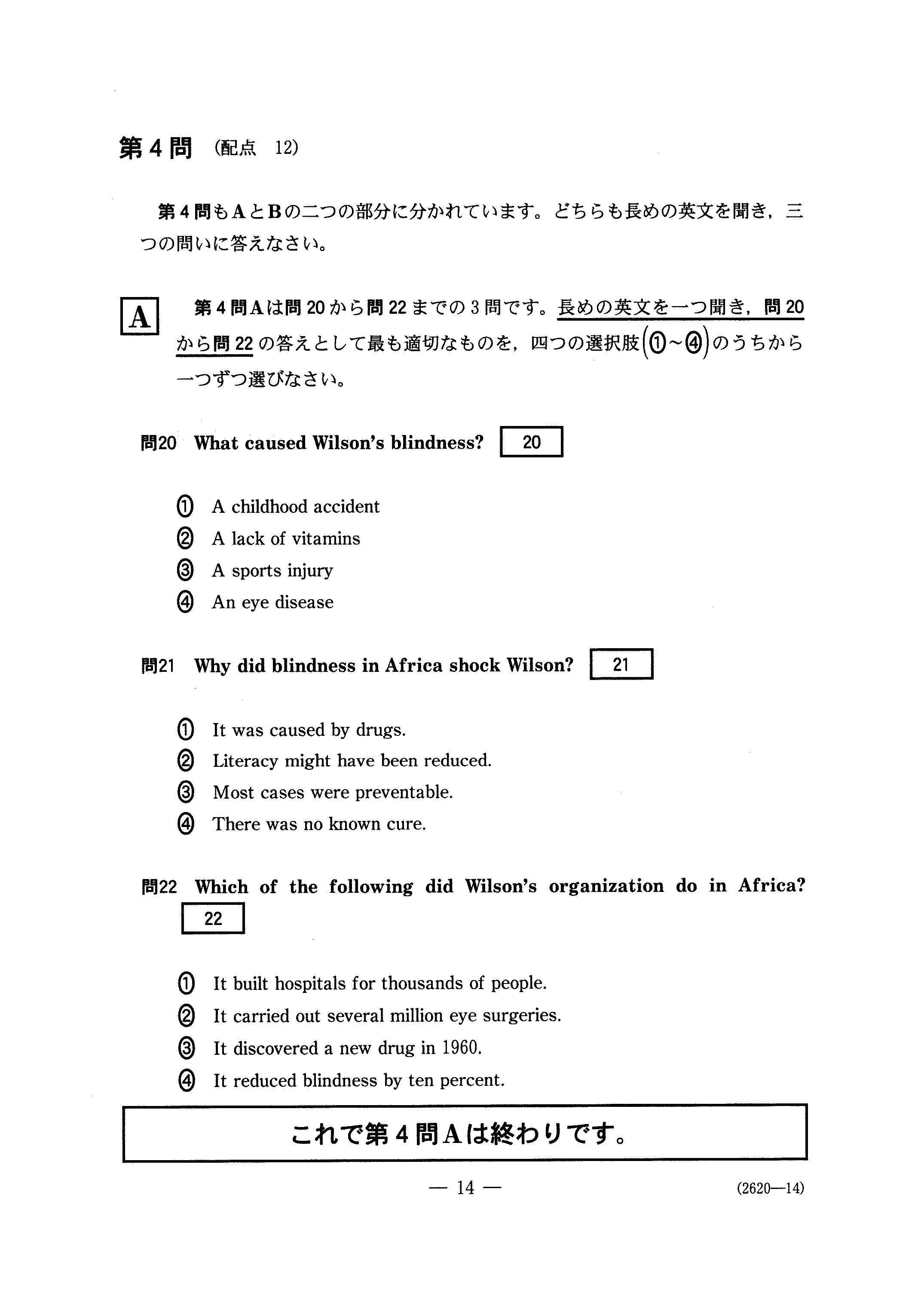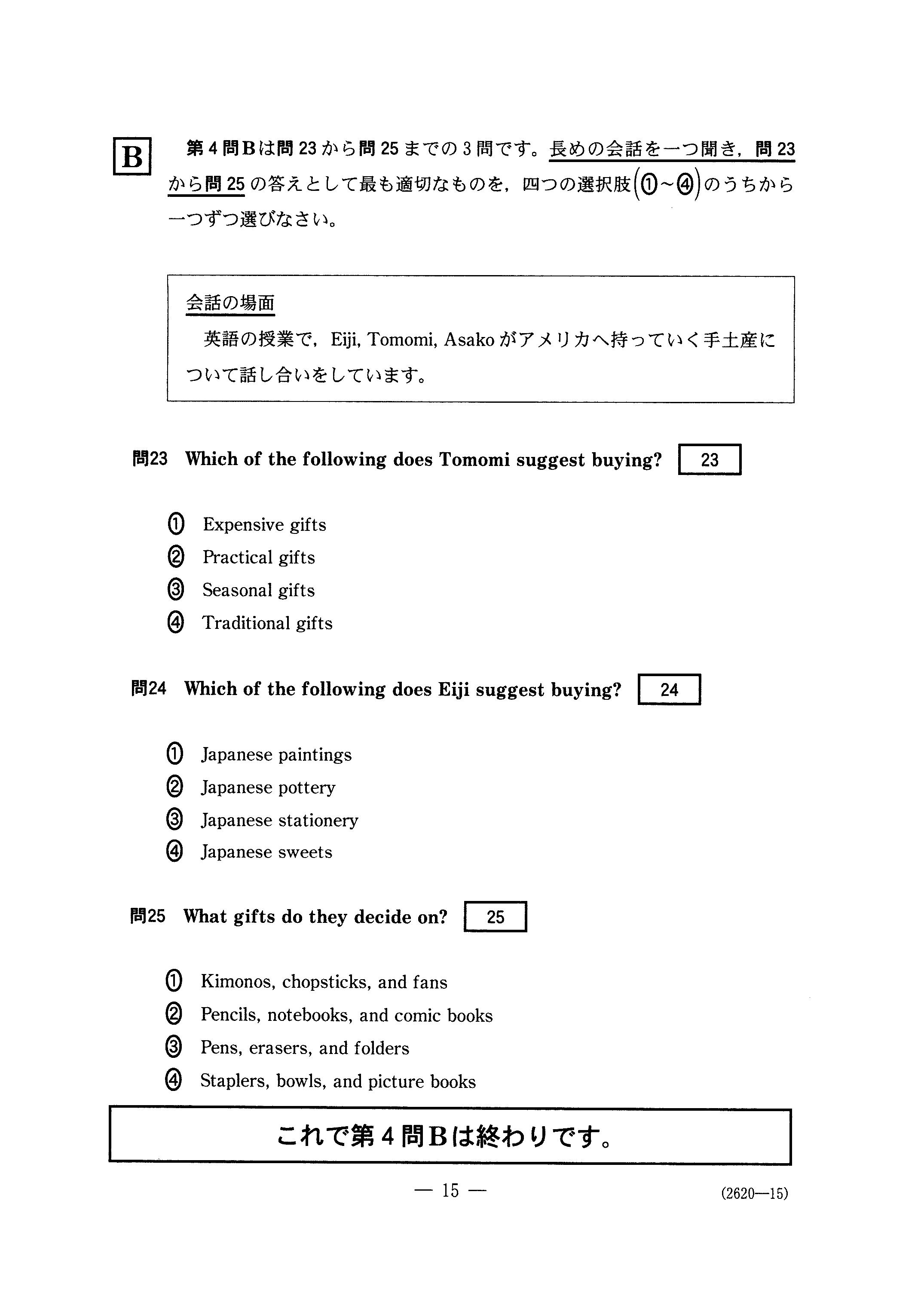



【リスニング台本】
Questions No. 20 to 22
John Wilson was an Englishman who worked to prevent blindness in the developing world. When he was 12 years old, he was blinded in both eyes during an experiment in science class. After that, he went to a school for the blind where he learned Braille, which is the writing system for people who can’t see. Then he studied law at Oxford University.
After Wilson graduated, he went to Africa. There, he was shocked to find widespread blindness not caused by accidents, as in his own case, but resulting from the lack of effective treatment for certain diseases. For decades, he led an organization to prevent such blindness in Africa through education, research, and health care. For example, a disease spread by insects blinded 10% of the people in a part of Ghana, but in the 1950s, his organization distributed a drug that nearly eliminated the disease by 1960. In addition, it helped reduce the number of blind children by giving out vitamins and also by performing over three million eye operations. As a result, millions of people who were in danger of becoming blind have been treated, and blindness is less common there now.
Questions No. 23 to 25
Eiji: OK. The teacher asked us to discuss gifts to take to our sister school in the US. What kind of gifts do you think we should take, Tomomi?
Tomomi: Hmm, what about stationery? I’ve heard that lots of Americans really like Japanese stationery
because there are a lot of cool and useful items. Some have cute cartoon characters on them. Even functional and practical things like pens, staplers, and notebooks have cool designs that might not be available in the US. Yeah, I think stuff like that would be good because it’s small, light, and easy to carry.
Eiji: That’s a good idea, Tomomi, but don’t you think something more traditional would be better
―like a kimono? Well, maybe not a kimono because that would be too expensive. But what about chopsticks or fans? Oh, I know. How about ceramic bowls, vases, and those kinds of things? I’ve seen them for sale in tourist areas, and they seem really popular. Some have pictures of carp, cherry blossoms, or maple leaves on them. Yeah, I think we should take something like that. What do you think, Asako?
Asako: Me? Well, I agree that our presents should reflect Japanese culture. But that kind of traditional stuff you mentioned might be better for older people. I’ve heard that some American teenagers these days are crazy about Japanese pop culture, especially anime and manga. I like Tomomi’s idea of taking pens, but how about adding some folders with popular manga or anime characters on them and some cute erasers? Pottery would be too heavy, but stationery is easy to pack and carry. I’m sure everyone would love it. Oh, maybe not the teachers, though. Let’s just get them nice stationery items with traditional designs.
Eiji: Brilliant! Those are really good points, Asako.
Tomomi: OK. It’s settled then. Let’s go with those ideas
【解答】2017年度 本試験 第4問
A
問20 ① 問21 ③
問22 ②
B
問23 ② 問24 ②
問25 ③



